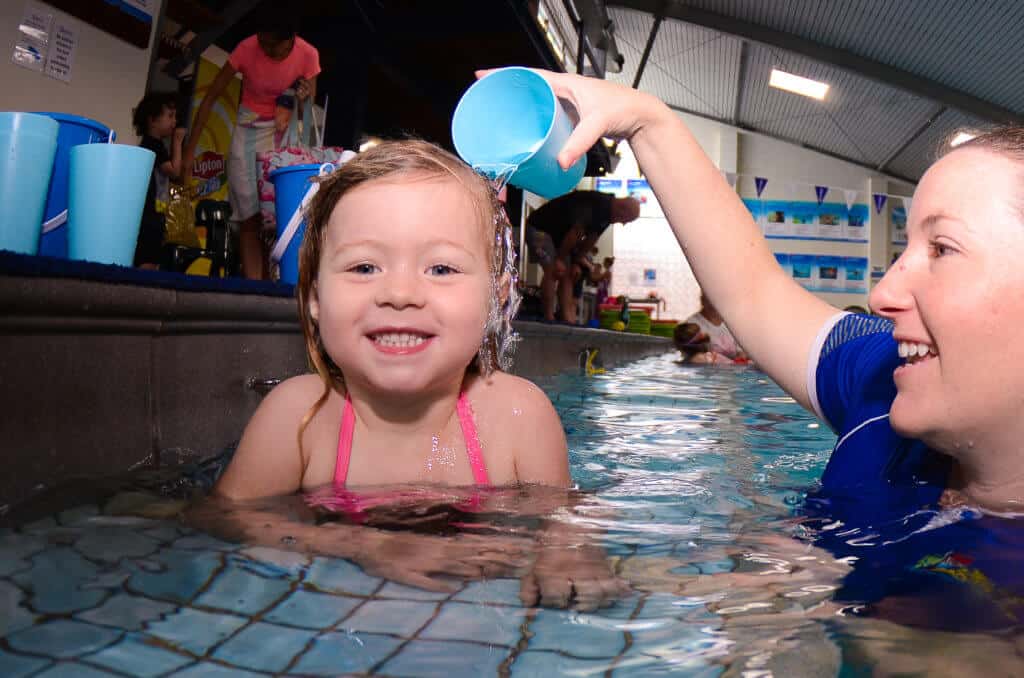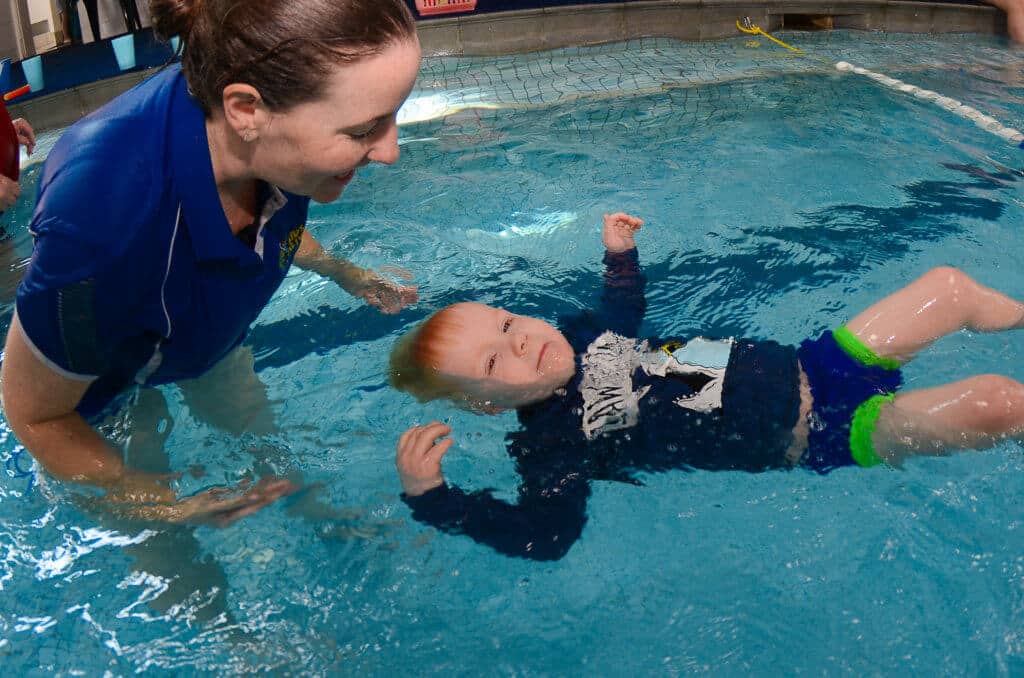Breath control is an essential element in the learn to swim process. By teaching children breath control, we make the first submersion, free from fuss and trauma. Teaching breath control to babies from 0-2 years is best done by conditioning. Here, we prepare baby for their first under water experience. This is by conditioning them to react and hold their breath in response to the verbal conditioning trigger, “Ready, go!”.
Daily Practice sees Results

Because the water runs quickly, smoothly and evenly down the forehead, baby should not ingest any water. With daily practice, baby will soon react positively to these “trigger words”. They will remain happy and confident with water on their face. In addition, they will learn how to close their eyes on the trigger. Once the teacher or parent notices this positive reaction, the baby will be ready for their first submersion.
By two years of age, teaching breath control by conditioning becomes less effective. While some children may still accept the conditioning process, others may protest. This occurs because at this age, children understand a lot more about their environment. They are starting to form their own opinions, ideas and fears.
Encourage Underwater Activity

At this age, children need to participate in voluntary breath control activities. They can follow instructions and you can encourage them to put their faces under the water. Importantly, a child’s head should never be held or forced underwater. Once children have mastered breath control, and are happy with their submersions, we can extend the time spent underwater. In the initial conditioning, the water runs quickly over the face. When trying to extend the breath control, the parent or teacher can practice a slow, long pour over the face. This can also be done when we teach babies to hold their breath for longer periods of time.
Use Trigger Words and Counting

For best practice, use trigger words, pour the water on top of the forehead and as you pour, count “1, 2, 3”. Then repeat the pour, whilst counting “1, 2, 3, 4”, and again for the count of “1, 2, 3, 4, 5”. By building the skills in this way, it will be easier to perform submersions for the count of up to 5 seconds.
As children grow, we can instruct them to submerge their face and keep it underwater for the count of 5 to 10 seconds. Once again, we are building on their swimming skills. Always remember that we should ever forcibly submerge any child, as this will cause discomfort and stress. Swimming should be a happy and positive experience for both parent and child.
By Laurie Lawrence.
